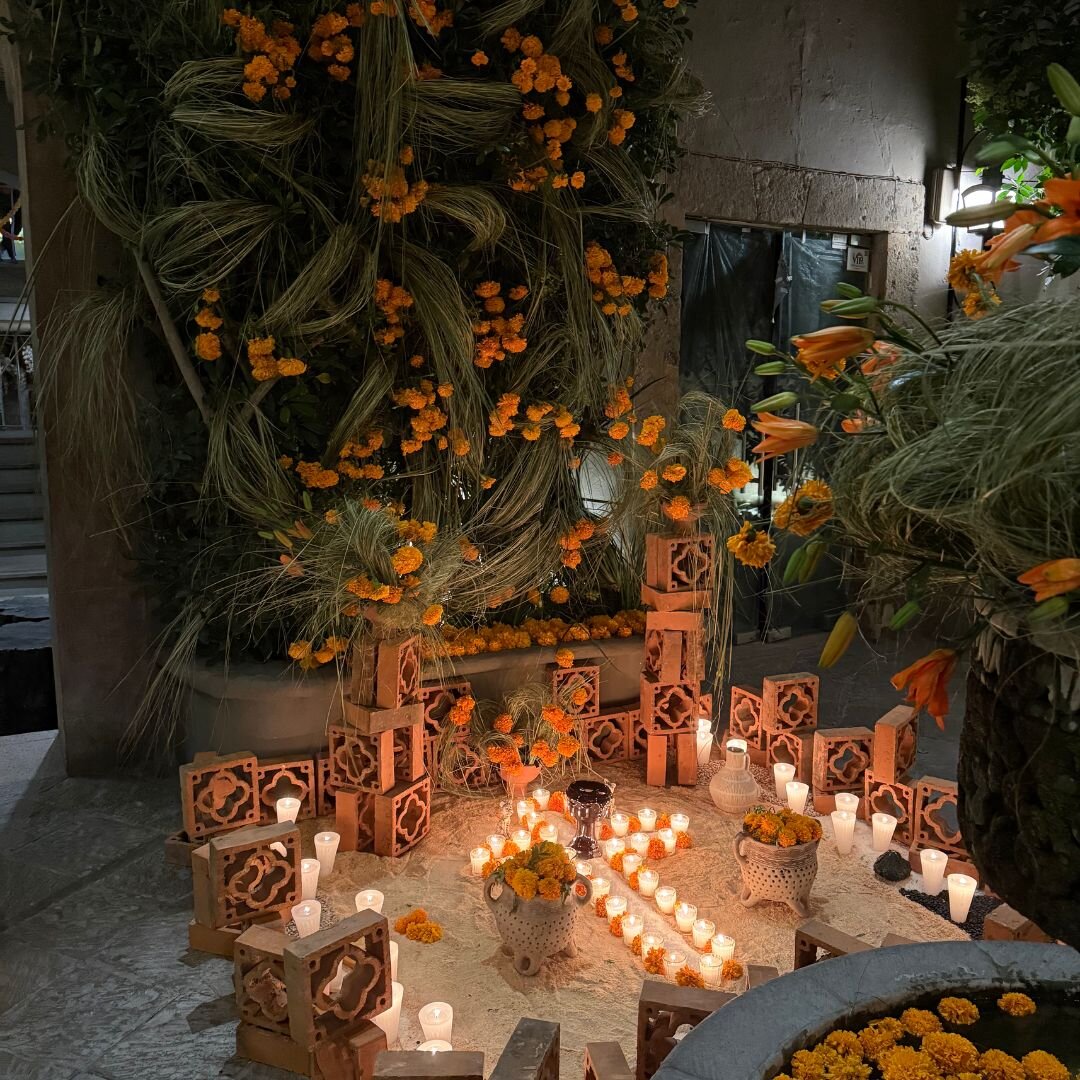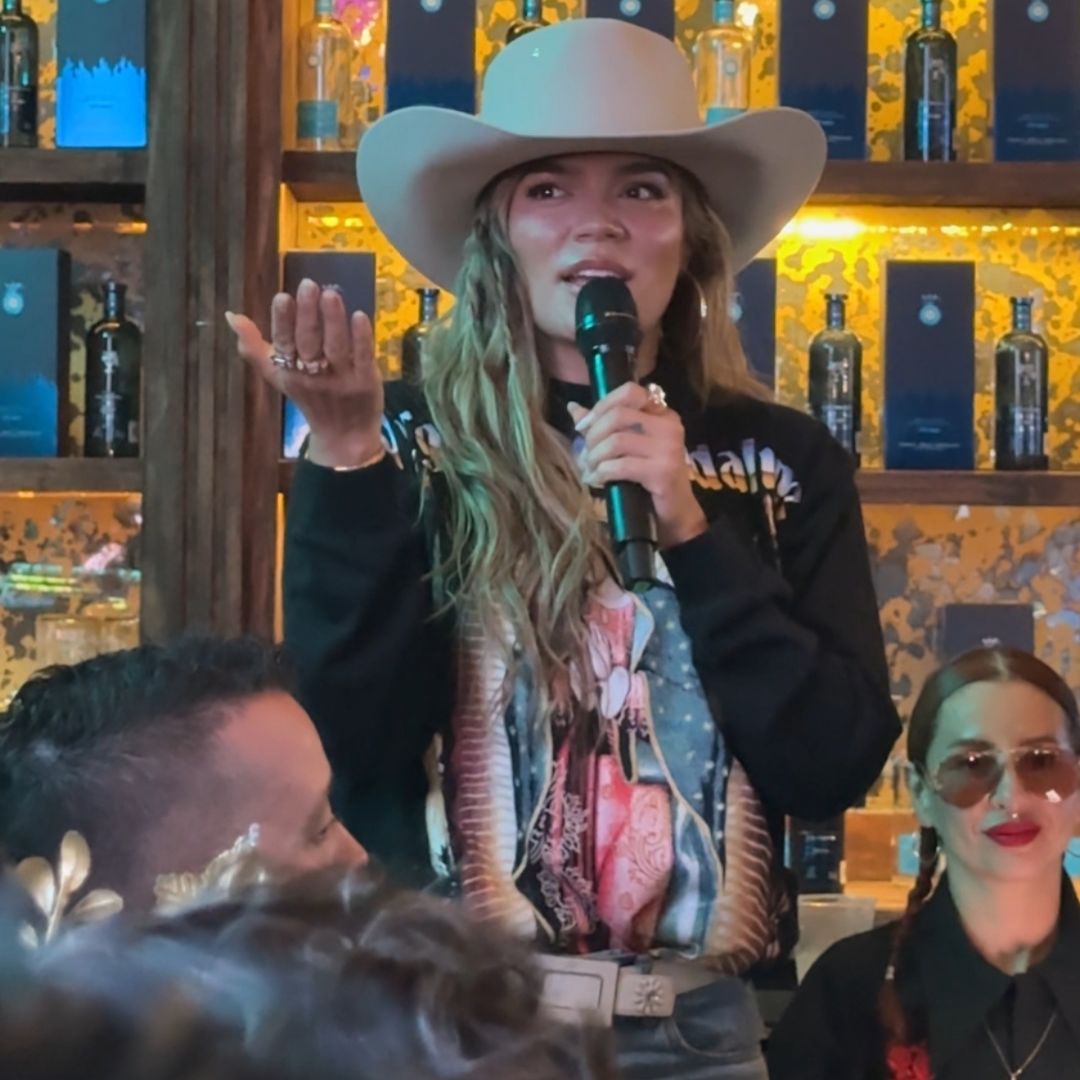Día de los Muertos in San Miguel de Allende: Pan de Muerto, Butterflies & a Karol G Cameo


Photo by Tess García.
I arrived in San Miguel de Allende, Mexico for Día de los Muertos with my great grandmother, Antonina, on my mind. As I watched tourists and locals arrange ofrendas (altars), paint their faces in homage to La Catrina, and bite into fresh-baked pan de muertos, I wondered whether Antonina would make her presence known to me. She died before I was born, but I got my middle name from her, and we share so many similarities — she was a seamstress, and I’m a fashion aficionado — that I hoped to find her within the centuries-old rituals of Mexico’s Day of the Dead.
Día de los Muertos has pre-Hispanic roots in indigenous communities like the Aztecs, Mexicas, Mayans, and Purépechas. In the Aztec month of Miccailhuitontli, which approximately equates to August, they honored their dead in celebrations guided by the goddess Mictecacihuatl, meaning “Lady of the Dead.” As National Geographic notes, these traditions fused with the Catholic All Saints’ Day and All Souls’ Day when Spain colonized the territory we now know as Mexico.
Today, Mexicans around the world celebrate Día de los Muertos with ofrendas, which invite deceased loved ones to visit on November 1 and 2. Ofrendas often include photos of the deceased, their favorite foods and drinks, sugar calaveras (skulls), candles, and sprays of cempasúchil, or marigolds. The fragrance of the blooms is believed to lead the souls of the dead back to their family homes.
I knew all of this before I went to San Miguel de Allende. But when I touched down in the UNESCO World Heritage Site, I realized nothing could have prepared me for the extent of its festivities. Residents and businesses framed almost every doorway with handmade decorations of marigolds, skeletons, brightly-colored ribbons, and monarch butterflies, which carry the souls of the dead, according to the holiday’s traditions. Tourists and locals strolled the streets in a rainbow of garments and skull-inspired makeup. Some sported larger-than-life costumes featuring a papier-mâché head and torso placed above their shoulders, creating the illusion of mystical giants roaming the cobblestone streets.

Photo by Tess García.
One of the first items on my to-do list was a visit to Panina, a famed bakery specializing in masa madre, or sourdough. On my walk over, I passed through Parque Benito Juárez, where artisans sold jewelry in the shapes of La Virgen de Guadalupe and the Sacred Heart. Both have Catholic roots, but are now worn by the religious and non-religious alike as emblems of Mexican culture. Monarch butterflies floated past the street when I reached my destination.
I ordered a cafe de olla, a traditional Mexican coffee with cinnamon and unrefined cane sugar, and Panina’s twist on pan de muerto, which featured an orange blossom cream filling. The bread, porous and soft, allowed the sweet, citrus flavor to be the star of the show. I dipped pieces into the cafe de olla, feeling cozy and praying someone would place these on my ofrenda one day. Later, I headed to fusion restaurant Atrio for a terrace lunch with views of the famed Parroquia de San Miguel Arcángel. I dug into Chinese siu mai, Japanese duck gyoza, and a tuna ceviche so flavorful, I forgot my usual disdain for seafood.
For the rest of the weekend, I witnessed a range of celebrations that felt personal to every participant. Children dressed in skeleton costumes performed a dance recital in El Jardín, the city’s central plaza. Street vendors sold Catrina-inspired flower crowns beneath rows of papel picado banners, which billowed delicately in a reference to life’s fragility. In an evening at karaoke bar Sala de Despecho, guests held glasses of flavorful sipping tequila in one hand, a microphone in the other.
At Sala de Despecho, I was even graced by the presence of Karol G, who has long expressed her admiration for Mexican culture, and visited the bar to toast to 200 Copas, her new collaboration with Casa Dragones. The 2026 Coachella headliner donned a bone-colored cowboy hat and Virgen de Guadalupe tee as she and her friends belted classics from Thalía, Selena, and Karol’s own discography.

Photo by Tess García.
Getting ready for my final night in San Miguel, I struggled with what to wear. I thought back to the butterflies I saw outside Panina, whose presence left me in surprise and wonder. That wonder echoed what I felt when I first discovered how much I share with my namesake great grandmother. In the end, I wore a butterfly corset and painted a pair of wings around my eyes. It’s no ofrenda, but self-expression through fashion felt like an appropriate homage to Antonina, my very own ancestral matriarch.

